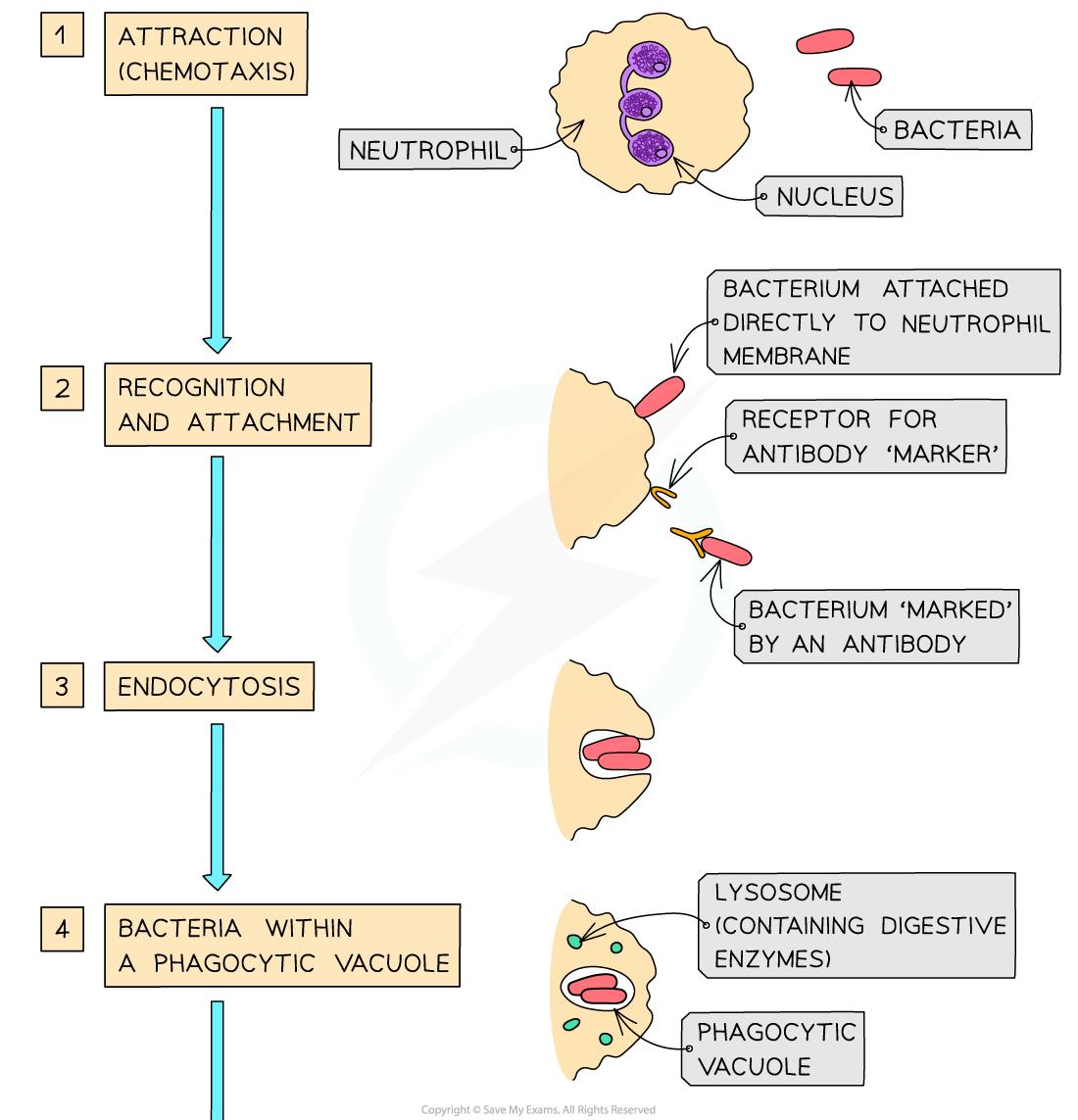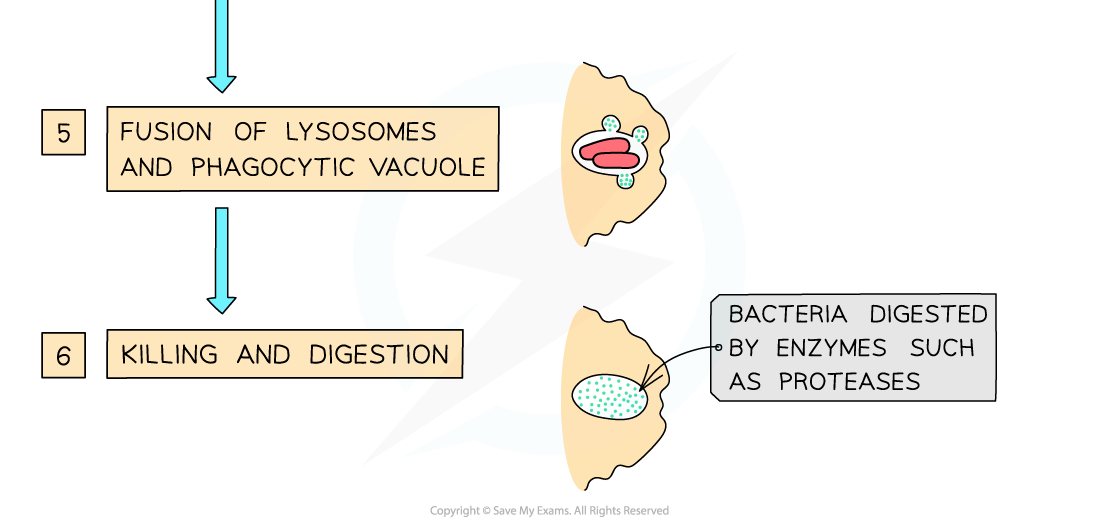- 翰林提供学术活动、国际课程、科研项目一站式留学背景提升服务!
- 400 888 0080
AQA A Level Biology复习笔记2.5.3 Phagocytosis
Phagocytosis
- Phagocytes are white blood cells that are produced continuously in the bone marrow
- They are stored in the bone marrow before being distributed around the body in the blood
- They are responsible for removing dead cells and invasive microorganisms
- They carry out what is known as a non-specific immune response
- There are two main types of phagocyte, each with a specific mode of action. The two types are:
- Neutrophils
- Macrophages
- As both are phagocytes, both carry out phagocytosis (the process of recognising and engulfing a pathogen) but the process is slightly different for each type of phagocyte
Neutrophils
- Neutrophils travel throughout the body and often leave the blood by squeezing through capillary walls to ‘patrol’ the body tissues
- During an infection, they are released in large numbers from their stores
- However, they are short-lived cells
- Mode of action:
- Chemicals released by pathogens, as well as chemicals released by the body cells under attack (eg. histamine), attract neutrophils to the site where the pathogens are located (this response to chemical stimuli is known as chemotaxis)
- Neutrophils move towards pathogens (which may be covered in antibodies)
- The antibodies are another trigger to stimulate neutrophils to attack the pathogens (neutrophils have receptor proteins on their surfaces that recognise antibody molecules and attach to them)
- Once attached to a pathogen, the cell surface membrane of a neutrophil extends out and around the pathogen, engulfing it and trapping the pathogen within a phagocytic vacuole
- This part of the process is known as endocytosis
Lysosomes
- Lysosomes are membrane organelles that contain digestive enzymes called lysozymes
- These enzymes digest unwanted material present in cells
- The phagocytic vacuole formed around a pathogen once it has been engulfed by a neutrophil is called a phagosome
- A lysosome fuses with the membrane of the phagosome (to form a phagolysosome) and releases lysozymes (digestive enzymes) to digest the pathogen
- These digestive enzymes destroy the pathogen
- After killing and digesting the pathogens, the neutrophils die
- Pus is a sign of dead neutrophils


The stages of phagocytosis
Macrophages
- Macrophages are larger than neutrophils and are long-lived cells
- Rather than remaining in the blood, they move into organs including the lungs, liver, spleen, kidney and lymph nodes
- After being produced in the bone marrow, macrophages travel in the blood as monocytes, which then develop into macrophages once they leave the blood to settle in the various organs listed above
- Mode of action:
- Macrophages play a very important role in initiating an immune response
- Although they still carry out phagocytosis in a similar way to neutrophils, they do not destroy pathogens completely
- They cut the pathogens up so that they can display the antigens of the pathogens on their surface (through a structure called the major histocompatibility complex)
- These displayed antigens (the cell is now called an antigen-presenting cell) can then be recognised by lymphocytes (another type of white blood cell)
转载自savemyexams

早鸟钜惠!翰林2025暑期班课上线

最新发布
© 2025. All Rights Reserved. 沪ICP备2023009024号-1








